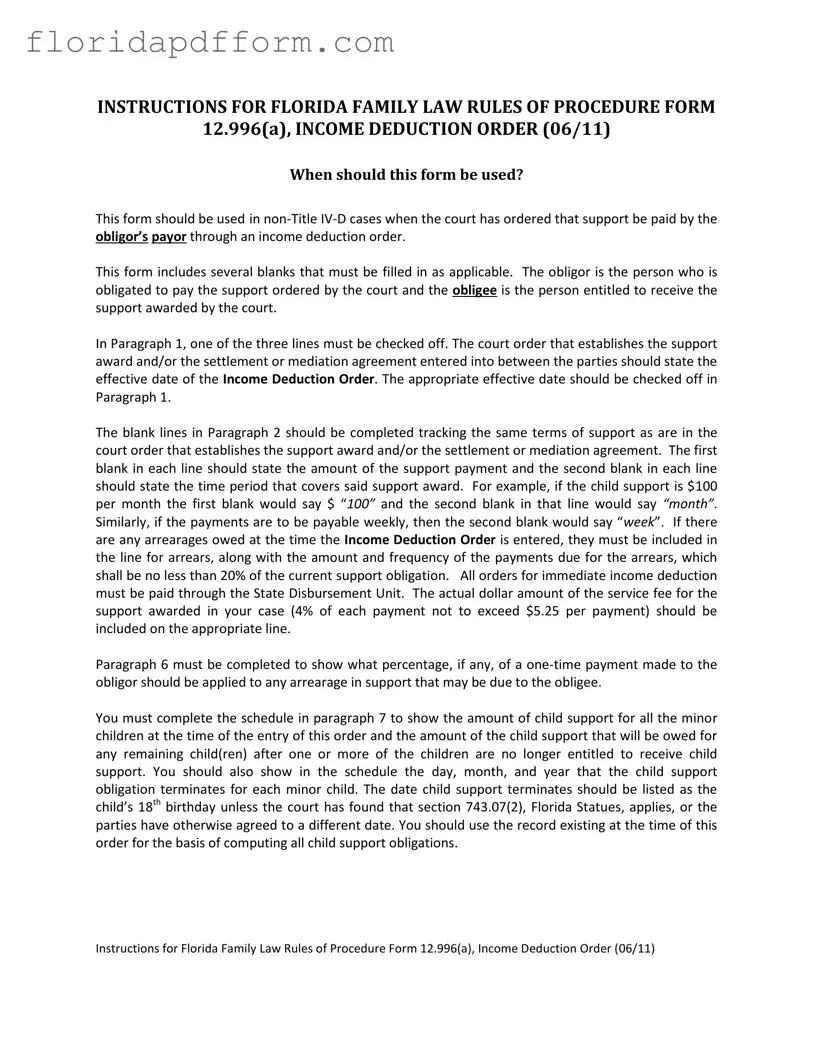How to Use Florida Order
Completing the Florida Order form is a straightforward process that requires careful attention to detail. Once the form is filled out, it must be sent to the appropriate parties for review before being submitted to the judge for approval. Follow these steps to ensure the form is completed correctly.
- Begin by entering the name of the judicial circuit and the county where the case is filed at the top of the form.
- Fill in the case number and division information.
- Identify the petitioner and respondent by entering their names in the designated spaces.
- In Paragraph 1, check the appropriate box to indicate when the Income Deduction Order should become effective.
- Complete Paragraph 2 by filling in the amount of child support, alimony, and any arrears, along with the frequency of payments.
- Include the service fee amount in the designated line.
- In Paragraph 6, specify what percentage of any one-time payment should be applied to arrears, if applicable.
- Complete Paragraph 7 by listing all minor children, their initials, birthdates, and the amount of child support owed for each child.
- Indicate the termination date for child support obligations for each child, typically the child's 18th birthday.
- Review the entire form for accuracy and completeness before proceeding.
After finishing the form, send a copy to the other party or their attorney for approval or objection. If there are no objections, submit the original and two copies to the judge, along with a letter explaining the approval process. If there are objections, inform the judge accordingly. Keep a copy for your records, as the judge will mail copies of the signed order back to you and the other party.
